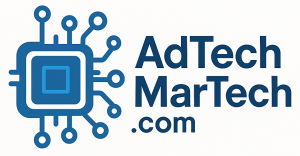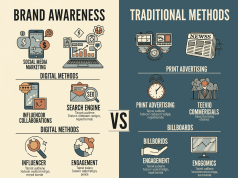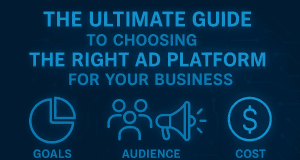Advertising has traversed an extraordinary journey from traditional methods to sophisticated digital strategies, transforming how brands connect with consumers. The 21st century has brought about unprecedented changes fueled by technological advancements and changing consumer behaviors. This article explores the evolution of advertising, tracing the shift from billboards to bytes.
The Era of Traditional Advertising
At the dawn of the 21st century, advertising predominantly featured traditional media: television, radio, print, and outdoor billboards. These channels played a significant role in brand visibility, allowing companies to reach mass audiences. Advertising campaigns were often crafted around broad demographics, with brands relying on catchy slogans, memorable visuals, and celebrity endorsements to capture attention.
While traditional advertising had its merits, it also faced limitations. The lack of precise targeting meant that marketing messages often reached uninterested audiences, leading to wasted resources. For many brands, measuring the effectiveness of campaigns was challenging and often based on estimations rather than concrete data.
The Digital Revolution
The advent of the internet marked a watershed moment for advertising. With the proliferation of digital technologies, companies began to explore online platforms that offered new avenues for engagement. Websites, email marketing, and social media emerged as potent tools for reaching specific consumer segments.
The Rise of Social Media
Social media platforms revolutionized the way brands interact with consumers. Platforms like Facebook, Twitter, and Instagram became essential for marketers, allowing for targeted advertising that could directly engage specific demographics. The introduction of algorithms enabled advertisers to tailor content based on user behavior and preferences, enhancing the relevancy of advertisements.
User-generated content played a crucial role in this shift, as consumers became active participants in branding discussions. Brands started leveraging influencers—individuals with significant followings and credibility—to amplify their messages. This shift from push advertising to engaging storytelling allowed for more authentic connections with consumers.
Data-Driven Marketing
As digital advertising matured, data became its backbone. Marketers harnessed analytics to track consumer behavior, preferences, and interactions across various platforms. Tools such as Google Analytics and social media insights provided actionable data to refine campaigns and maximize return on investment (ROI).
Personalization became paramount as brands began to understand the importance of delivering tailored messages to individuals. Whether through retargeting ads based on browsing history or customized email campaigns, the use of data allowed for a more relevant consumer experience, fostering loyalty and engagement.
The Mobile Revolution
With the rise of smartphones, advertising evolved once more. Mobile ads became an essential component of digital strategies as consumers increasingly relied on their devices for information, shopping, and social interactions. Apps, mobile websites, and location-based marketing opened avenues for reaching consumers on the go.
This shift was accompanied by the emergence of new formats, such as short videos and interactive ads, designed to capture attention in an age of information overload. Innovations like augmented reality (AR) and virtual reality (VR) have begun to transform the advertising landscape, providing immersive experiences that engage consumers in unique ways.
Ethical Considerations and Consumer Privacy
As advertising techniques evolved, so too did concerns regarding consumer privacy. The collection and use of data raised ethical questions, leading to intensified scrutiny from consumers and regulators. Laws such as the General Data Protection Regulation (GDPR) in Europe and the California Consumer Privacy Act (CCPA) in the United States aimed to protect consumer data and ensure transparency in advertising practices.
In response, brands have had to navigate the delicate balance between personalization and privacy. Responsible data usage has become a critical aspect of modern advertising strategies, with businesses striving to earn consumer trust while delivering relevant content.
The Future of Advertising
Looking ahead, the future of advertising will likely continue to intertwine technology, creativity, and ethical considerations. Emerging technologies like artificial intelligence (AI) and machine learning will revolutionize targeting and personalization, optimizing campaigns in real-time. Voice-activated technology and smart devices will also shape how consumers interact with brands, opening yet more avenues for engagement.
Moreover, sustainability and social responsibility are poised to become central themes in advertising. Consumers increasingly seek brands that align with their values, pushing companies to incorporate purpose-driven messaging into their campaigns.
Conclusion
The evolution of advertising from billboards to bytes illustrates a remarkable transformation driven by technology, data, and shifting consumer expectations. In the 21st century, brands must adapt to thrive, leveraging innovative platforms while maintaining a commitment to ethical practices and consumer trust. As the landscape continues to evolve, the essence of advertising remains rooted in storytelling, connection, and the art of persuasion—ensuring it will remain a vital component of business for years to come.









